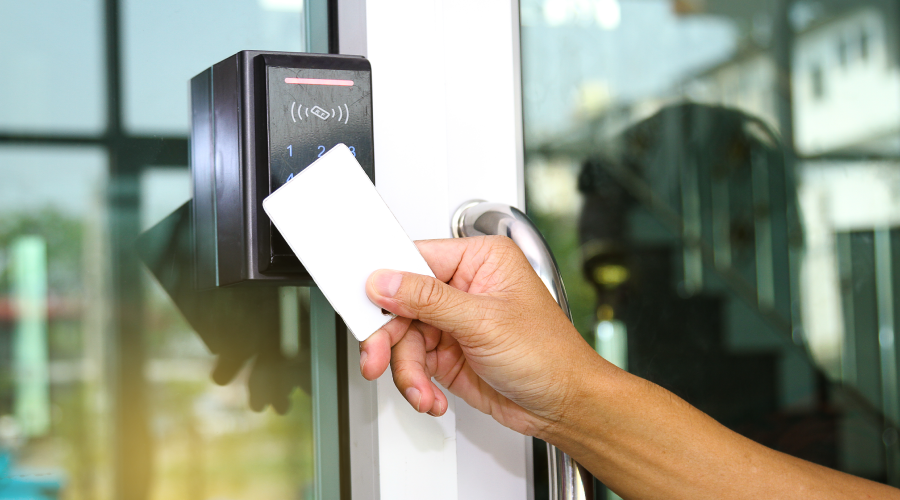Door Hardware: Stand-Alone Locking Widely Available
Many managers want a physical access-control system but lack the electrical and information technology infrastructure in the facility. To pull in 110 VAC mains and Category 5/6 cabling is not an option.
Consider the hotel industry, where all room door locks are self-powered. That same technology is available to most facilities, and many manufacturers provide standalone-locking options.
Multiple authentication factors include combinations of biometrics, magnetic-stripe cards, all forms of proximity cards or tokens, and PIN pads. Many of these systems can support both connected and stand-alone locking solutions and their programming, audit software, and operation support from dozens to thousands of portals and users.
Managers can program locks in a variety of ways, depending on the manufacturer. Some have wireless programmers that also upload the usage history of the lock. Some can be networked, and some in development use WiFi — 802.11 — networkable or mesh-networked radio frequency communications. These later solutions allow for stand-alone locking with real-time audit capabilities and on-the-fly programming.
The days of having to re-key a lock are gone. The nightmare and expense of having to re-key an entire facility or campus due to a lost or stolen master key also is a thing of the past.
One such incident would cost more than implementing one of the solutions discussed here. Other advantages include the ability to restrict entrance to portals based on day of the week and time of day, the ability to disable a lost or stolen key or credential, multiple key or credential presentation abilities for high-security areas, reporting unauthorized entry attempts by users, and the ability to produce and print an audit trail for a portal or facility.
One other consideration is none of these solutions requires an entire facility or campus to upgrade its lock hardware all at once. These solutions can be phased-in, starting with the most sensitive areas and adding other portals as the budget allows.
At the very least, managers will gain the added security inherent in the technology, as well as peace of mind knowing they can disable a lost or stolen key or credential almost in real time. At the other end of the spectrum, all of these solutions allow for a centralized administration function and extreme flexibility when faced with extenuating circumstances.
Mark Visbal is the research director with the Security Industry Association.
Related Topics:















